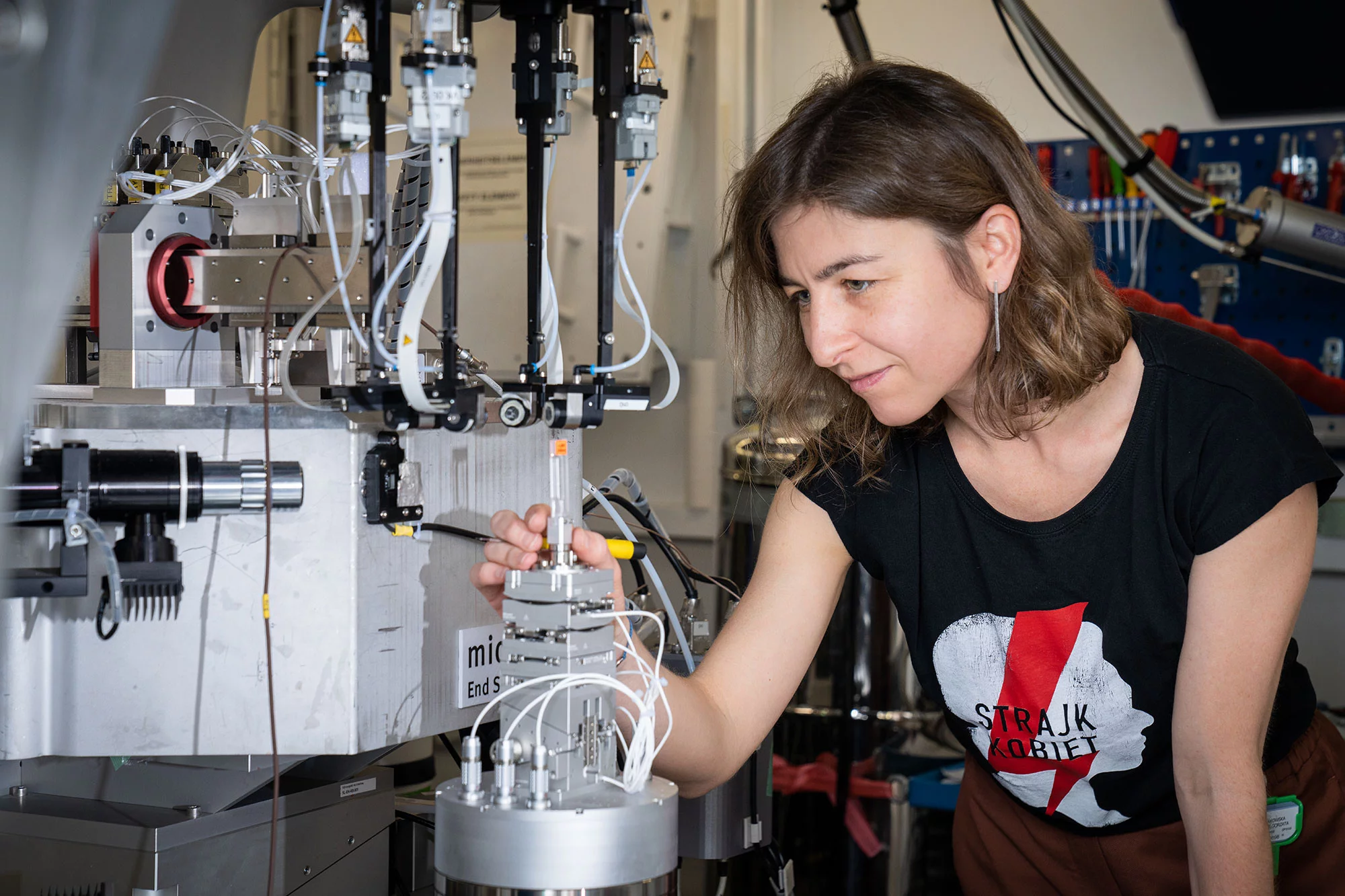Micro-beam measurements at the Swiss Light Source SLS have enabled insights into the crystal structure of hydrides that promote cracks in nuclear fuel cladding. This fundamental knowledge of the material properties of cladding will help assess safety during storage.
For over seventy years, zirconium alloys have been used as cladding for nuclear fuel rods. This cladding provides a structural support for the nuclear fuel pellets and an initial barrier to stop fission products escaping into the reactor water during operation. During its long history, which includes extensive research and development advances, reactor type zirconium alloys have proved themselves as an extremely successful material for this application.
Yet they have a well-known nemesis: hydrogen. When submerged in water during operation in a reactor, at the hot surface of the fuel rod water molecules split into hydrogen and oxygen. Some of this hydrogen then diffuses into the cladding. It makes its way through the cladding until – when the concentration and conditions are right - it precipitates to form chemical compounds known as zirconium-hydrides. These hydrides make the material brittle and prone to cracking. Now, using the Swiss Light Source SLS, researchers were able to shed new light on the interplay between cracking and hydride formation.
Elusive hydride observed at crack tips
Using a technique called synchrotron micro-beam X-ray diffraction, the researchers could study the structure of hydrides during the growth of cracks in fuel cladding at a new level of detail. “Through thermomechanical tests, we could control extremely slow crack propagations. Discovering at such high spatial resolution which hydride formations actually occurred made all the challenges of the material preparation worthwhile,” says study first author, Aaron Colldeweih who designed the thermomechanical testing procedure as part of his PhD project at PSI.
One of the things they discovered was that an unexpected type of hydride was present at the crack tip. This type of hydride, known as gamma-hydride has a slightly different crystal structure and stoichiometry to the type more commonly present, known as delta-hydride, “There has been a lot of discussion about gamma-hydrides: whether they are stable and whether they exist at all. Here we could show that with certain applied stresses you create gamma-hydrides that are stable,” says Johannes Bertsch, who leads the Nuclear Fuels Group in the Laboratory of Nuclear Materials at PSI.
MicroXAS beamline gives a close up view
The reason that the team could finally show this has to do with the size of the beam. “Previous synchrotron studies published up to now were performed over a large area. That means that if there’s only a small amount of gamma-hydride in one place, you miss it,” explains Malgorzata Makowska, scientist at the microXAS beamline and in the Advanced Nuclear Materials group. The hydrides are typically a few microns in width. In other synchrotron studies of such materials, the beam used was typically between one hundred and two hundreds of microns in diameter. “With the micro-beam, we have a resolution of about one micron, so we can extract the information from a very small area. Being able to look at the hydrides in this much detail is possible at very few other places in the world,” she adds.
Being able to look at the hydrides in this much detail is possible at very few other places in the world.
Making safer with science
The next step will be to understand what this means for the mechanical properties of zirconium based claddings. “There is already some discussion about this. The changed crystallographic properties may make a difference in the embedding of the hydrides into the alloy matrix and thus impact the local stability of the material. But this is another topic for investigation!” says Bertsch.
Such fundamental knowledge of what happens in cladding under real conditions is important to support computational models that predict the evolution of fuel and cladding during storage and further enhance safety.
Text: Paul Scherrer Institute / Miriam Arrell
© PSI provides image and/or video material free of charge for media coverage of the content of the above text. Use of this material for other purposes is not permitted. This also includes the transfer of the image and video material into databases as well as sale by third parties.
Contact
Dr. Johannes Bertsch
Group Leader Nuclear Fuels
Paul Scherrer Institute PSI
+41 56 310 41 73
johannes.bertsch@psi.ch
Original Publication
Zirconium hydride phase mapping in Zircaloy-2 cladding after delayed hydride cracking
Aaron W. Colldeweih, Malgorzata G. Makowska, Omaïa Tabai, Dario Ferreira Sanchez & Johannes Bertsch
Materialia, 12. January 2023 (online)
DOI: 10.1016/j.mtla.2023.101689

